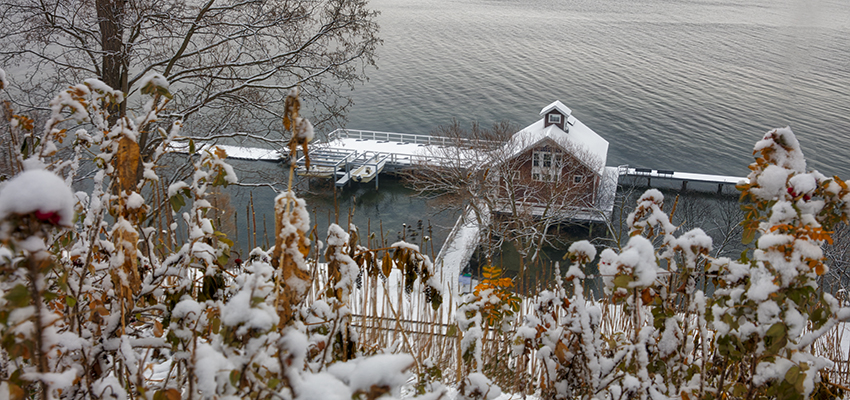
Diving Deep into Wind Chill
21 December 2017 Diving Deep into Wind Chill
A recent article in the Journal of Applied Meteorology and Climatology by an HWS student/faculty research team examines wind chill across North America during the past four decades.
The article, titled Intraseasonal Variations of Winter Wind Chill Temperatures across Canada and the United States, was researched and written by Macy Howarth 16, who is now a graduate student in the Department of Atmospheric and Environmental Sciences at the State University of New York in Albany, and Professor of Geoscience Neil Laird. Howarth graduated summa cum laude in Geoscience with a concentration in Atmospheric Sciences and completed the published research as part of her senior Honors project at HWS.
Howarth and Laird analyzed a large data set of surface temperatures collected every hour across 45 winters dating back to the late 1960s from 156 locations across North America. This was one of the biggest challenges of the project, says Howarth. Working with station data provides amazing detail, but it can be challenging to find stations with long and cohesive recordsespecially in Northern Canada.
By performing analyses with statistical and GIS software, they were able to determine that January was the month with the coldest wind chill temperatures (WCT) across most of North America, as well as the greatest frequency of severe WCT hoursthose hours when WCTs were less than -32 degrees Celsius. The most extreme WCTs on average occurred in the Hudson Bay region in Canada.
The research provides significant value to weather professionals. Our study allows meteorologists and climate scientists to understand the likelihood of extreme wind chill events across Canada and the United States. Additionally, since our analyses of winter wind and temperature conditions spanned several decades it will allow for an examination of changes in wind chill conditions that may have occurred because of changing climate conditions, says Laird.
Howarth credits the project with helping to prepare her for graduate school. Entering graduate school with several summers of research experience completed and a publication underway helped me to dive into my graduate work with confidence, she says. It was a natural progression from working closely with professors at HWS to working independently in graduate school.
Currently, Laird and Howarth are preparing a second article for publication that builds on the first. Howarth values the continuing faculty-student relationship that has developed through her research. I enjoy collaborating with Neil. He is an excellent adviser and was always there to help and bounce ideas off of, but pushed me to have independence and pursue my own ideas, she says.
